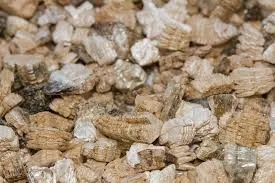Nov . 28, 2024 05:27 Back to list
Properties and Applications of Aluminosilicate Refractory Materials in High-Temperature Industries
Aluminium Silicate Refractory Materials An Overview
Aluminium silicate refractory materials play a crucial role in a variety of industrial applications due to their thermal stability, chemical resistance, and mechanical strength. These materials are primarily composed of alumina (Al₂O₃) and silica (SiO₂), and they are engineered to withstand extreme temperatures and harsh environments, making them essential in sectors such as metallurgy, ceramics, and energy production.
Composition and Properties
The primary components of aluminium silicate refractories are alumina and silica, which can be found in various ratios depending on the specific application requirements. The alumina content typically ranges from 30% to over 90%, influencing the refractory's performance characteristics. Higher alumina content generally leads to enhanced thermal stability and resistance to chemical attack.
These materials exhibit exceptional properties, including
1. High Melting Point With melting points often exceeding 1500°C, aluminium silicate refractories are well-suited for use in high-temperature environments. 2. Thermal Shock Resistance They possess good thermal shock resistance, allowing them to withstand rapid temperature fluctuations without cracking or breaking.
3. Chemical Resistance Aluminium silicate refractories resist a wide range of chemicals and molten metals, making them suitable for various industrial processes, including the production of steel and glass.
4. Mechanical Strength Their mechanical strength ensures they can endure heavy loads and abrasive conditions without significant wear or deformation.
Manufacturing Processes
The production of aluminium silicate refractory materials typically involves several processes, including mining, crushing, grinding, and firing. The raw materials are often sourced from natural deposits of kaolin, bauxite, and other clay minerals, which are processed to enhance their refractoriness.
1. Raw Material Preparation Mining and preprocessing of raw materials such as kaolin or bauxite is the first step. These materials are crushed and milled to achieve the desired particle size.
2. Formulation The prepared raw materials are then formulated to achieve specific alumina-silica ratios and are often mixed with additives to enhance properties like plasticity and strength during the shaping phase.
aluminium silicate refractory materials

4. Firing The shaped products are fired at high temperatures in kilns, where they undergo sintering. This process results in the fusion of particles, leading to the formation of a dense, durable refractory material.
Applications
Aluminium silicate refractories are widely used in various industries, including
- Steel Production These materials are essential in the manufacture of steel, where they line furnaces and ladles, providing thermal insulation and protection against molten metal corrosion.
- Ceramics and Glass In the ceramics industry, aluminium silicate refractories are used in kilns and for ware. Their ability to withstand high temperatures without deforming is vital for the energy-efficient production of ceramics and glass.
- Energy Generation In power plants, particularly in coal and biomass energy sectors, these refractories line boiler combustion chambers and flue gas ducting systems, ensuring that heat is maintained and emissions are controlled.
- Cement Production The high-temperature resistance of aluminium silicate refractories makes them suitable for use in cement kilns where they provide insulation and protect against the harsh conditions present during the production process.
Innovation and Future Trends
The demand for more efficient and durable refractory materials continues to grow alongside technological advancements in industrial processes. Researchers are exploring the development of composite materials that enhance the properties of traditional aluminium silicate refractories. Innovations such as the incorporation of nanoscale additives and advanced manufacturing techniques like 3D printing may lead to breakthroughs in refractory design, enabling materials that are lighter, stronger, and more environmentally friendly.
Furthermore, as industries increasingly focus on sustainability, there is a push towards developing refractories that have lower embodied energy and can be recycled at the end of their life cycle. The evolution of aluminium silicate refractory materials will thrive on addressing these challenges while meeting the rigorous demands of modern industrial applications.
Conclusion
Aluminium silicate refractory materials are indispensable in numerous industries due to their unique properties and versatility. As industries evolve and face new challenges, these materials will continue to adapt, ensuring their relevance well into the future. Their development and application are critical in driving efficiency and sustainability, paving the way for innovations that will shape the future of high-temperature manufacturing processes.
-
Eco-Friendly Granule Covering Agent | Dust & Caking Control
NewsAug.06,2025
-
Fe-C Composite Pellets for BOF: High-Efficiency & Cost-Saving
NewsAug.05,2025
-
Premium Tundish Covering Agents Exporters | High Purity
NewsAug.04,2025
-
Fe-C Composite Pellets for BOF | Efficient & Economical
NewsAug.03,2025
-
Top Tundish Covering Agent Exporters | Premium Quality Solutions
NewsAug.02,2025
-
First Bauxite Exporters | AI-Optimized Supply
NewsAug.01,2025
